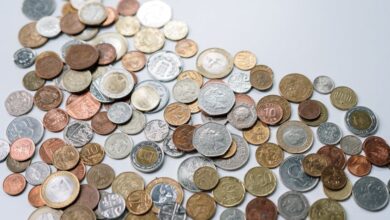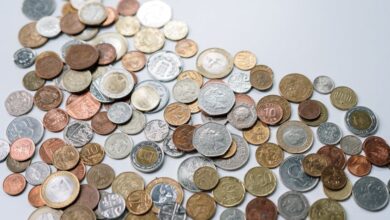The Economics of Metal Recycling: Unveiling Market Trends and Sustainable Opportunities in Ferrous and Precious Metals

In today's rapidly evolving industrial landscape, the economics of metal recycling has become increasingly vital. As global demand for metals rises, understanding the economic value and market impact of recycled metals is essential for businesses and investors alike. The metal recycling industry not only contributes to environmental sustainability but also offers significant financial opportunities within the realm of ferrous and non-ferrous metals. From steel and aluminum to precious metals like gold and platinum, the recycling of industrial metals is reshaping market dynamics, particularly as manufacturers seek sustainable metal production practices. This article will delve into the economic landscape of metal recycling, highlighting the value of both base metals and rare earth metals, while examining current market trends and investment opportunities in metal commodities. Additionally, we will explore the crucial role that recycling plays in the future of metal fabrication and metallurgy, especially in sectors such as construction, automotive, and aerospace. As we navigate the intricate interplay between metal mining, metal alloys, and sustainable practices, it becomes clear that recycling is not just an eco-friendly option but a cornerstone of strategic growth in the metals industry. Join us as we explore these critical topics and uncover the potential of metal recycling in shaping a sustainable future.
- 1. The Economic Landscape of Metal Recycling: Understanding the Value of Ferrous and Non-Ferrous Metals
- 2. Precious Metals and Rare Earth Metals: Market Trends and Investment Opportunities in Metal Commodities
- 3. Sustainable Metal Production: The Role of Recycling in the Future of Metal Fabrication and Metallurgy
1. The Economic Landscape of Metal Recycling: Understanding the Value of Ferrous and Non-Ferrous Metals
The economic landscape of metal recycling is a complex yet vital component of the global market, involving the recovery and repurposing of both ferrous and non-ferrous metals. Understanding the value of these metals is essential, as it not only influences pricing but also impacts sustainability and resource management.
Ferrous metals, primarily composed of iron, play a critical role in various industries, including construction and automotive manufacturing. Steel, which is the most recycled material worldwide, is a prime example of ferrous metal that holds significant economic value. The recycling of ferrous metals not only reduces the need for metal mining but also lessens energy consumption and greenhouse gas emissions associated with new metal production. As the demand for construction metals continues to rise, the market for recycled steel remains robust, contributing to a circular economy.
On the other hand, non-ferrous metals, such as aluminum, copper, zinc, and precious metals like gold and silver, also hold considerable economic value. Aluminum, for instance, is extensively used in aerospace and automotive applications due to its lightweight properties and resistance to metal corrosion. The recycling of aluminum saves up to 95% of the energy required for new production, making it a sustainable choice for manufacturers. Copper, another critical non-ferrous metal, is essential for electrical applications, making its recycling crucial as the demand for energy metals grows.
The market for rare earth metals, which are vital for high-tech applications and green technologies, is also influenced by metal recycling. As industries increasingly rely on these metals, the ability to recover them from recycled sources becomes economically advantageous. The trend of gold investing and silver investing is further supported by the recycling of these precious metals from electronic waste, jewelry, and industrial applications.
In addition to traditional applications, emerging sectors such as battery metals for electric vehicles and 3D printing metals are creating new economic opportunities for metal recycling. The rise in popularity of metal alloys and refractory metals in technological advancements means that the need for recycled materials will continue to grow.
Overall, the economic value of metal recycling is multifaceted, involving a wide range of metals, including base metals and precious metals. As industries and consumers shift towards sustainable metal production and responsible resource management, the impact of metal recycling on the economy is expected to expand. This trend not only promotes environmental sustainability but also opens up pathways for innovation in metal fabrication and the development of new metal trends, ultimately shaping the future of the global metals market.
2. Precious Metals and Rare Earth Metals: Market Trends and Investment Opportunities in Metal Commodities
The market for precious metals and rare earth metals is experiencing significant trends that present various investment opportunities within the broader context of metal commodities. Precious metals like gold and silver have long been regarded as safe-haven assets, particularly during periods of economic uncertainty. In recent years, gold investing has surged due to rising inflation rates, geopolitical tensions, and the increased demand for secure assets. Similarly, silver investing has gained traction, driven by its dual role as both an investment vehicle and an industrial metal used in electronics and solar panels.
On the other hand, rare earth metals, which include elements such as lithium, platinum, and palladium, are becoming increasingly vital in modern technology and sustainable metal production. With the rise of electric vehicles and the push for cleaner energy sources, battery metals like lithium are witnessing unprecedented demand. This trend is further amplified by the need for advanced metallurgy in the manufacturing of energy-efficient batteries and other technologies.
The dynamics of metal recycling also play a crucial role in shaping market trends. As industries seek to reduce costs and minimize environmental impact, the recycling of metals, particularly non-ferrous metals like aluminum and copper, has become more prevalent. Metal fabrication processes are evolving to incorporate recycled metals, making them more desirable in construction and automotive applications. Furthermore, the use of metal alloys derived from recycled materials is gaining popularity in aerospace and construction sectors, where durability and sustainability are paramount.
Investors should also pay attention to the fluctuations in base metals such as zinc and steel, which are essential in various industrial applications. The interplay between metal mining and recycling will continue to influence prices and availability, making it an essential aspect of market analysis. As the demand for metals grows, understanding the economic value of both recycled and newly mined metals is vital for investors looking to capitalize on these trends.
In summary, the landscape of precious and rare earth metals is characterized by increasing demand driven by technological advancements and sustainability efforts. By staying informed about metal trends and investing in a diversified portfolio of metal commodities, investors can navigate the evolving market effectively.
3. Sustainable Metal Production: The Role of Recycling in the Future of Metal Fabrication and Metallurgy
Sustainable metal production is increasingly recognized as a pivotal component in the future of metal fabrication and metallurgy. As global demand for metals continues to rise, the need for environmentally responsible practices becomes paramount. Metal recycling plays a crucial role in this transition, providing a sustainable alternative to traditional metal mining and production methods.
Recycling not only reduces the need for new metal extraction but also minimizes the environmental impact associated with mining activities. For instance, the production of ferrous metals, such as steel and iron, can be significantly less energy-intensive when sourced from recycled materials rather than from raw iron ore. Similarly, non-ferrous metals like aluminum and copper are highly recyclable and can retain their properties through multiple recycling processes, making them ideal candidates for sustainable production.
The economics of precious metals, such as gold and silver, also benefit from recycling initiatives. Gold investing and silver investing are increasingly influenced by the availability of recycled metals, which can stabilize market prices and reduce reliance on newly mined sources. Furthermore, rare earth metals, often used in high-tech applications, are becoming more prevalent in recycled form, thus addressing the growing demand in sectors like electronics and renewable energy.
In the context of construction and automotive industries, using recycled base metals such as zinc and aluminum not only supports sustainable practices but also contributes to the development of metal alloys that meet specific performance standards. This is essential for producing durable construction metals and automotive metals that can withstand metal corrosion and other environmental factors.
Moreover, advancements in metallurgy and 3D printing metals are paving the way for innovative applications in aerospace and energy sectors. The ability to create complex metal components from recycled materials can lead to reduced waste and enhanced performance, particularly in industries where high-strength and lightweight materials are critical.
As the world shifts towards a circular economy, the impact of metal recycling on sustainable metal production is undeniable. By prioritizing the use of recycled materials, industries can mitigate the environmental footprint of metal fabrication while embracing emerging trends, such as battery metals for electric vehicles and refractory metals for high-temperature applications. The future of metal production hinges on these sustainable practices, ensuring a balance between economic viability and environmental responsibility.
In conclusion, the economics of metal recycling play a pivotal role in shaping the future of the metals industry. As we have explored, both ferrous and non-ferrous metals hold significant economic value, driving demand across various sectors, including construction, aerospace, and automotive industries. The rise of precious metals and rare earth metals presents lucrative investment opportunities, especially in the context of gold and silver investing, which continue to attract attention from investors seeking stability and growth in volatile markets.
Moreover, the emphasis on sustainable metal production highlights the importance of metal recycling in reducing the environmental impact of metal mining and fabrication. By prioritizing the recycling of base metals like steel, aluminum, and copper, we not only conserve natural resources but also mitigate issues such as metal corrosion and waste. The integration of innovative technologies, including 3D printing metals and advancements in metallurgy, further enhances the potential of recycled metals to meet the demands of modern manufacturing processes.
As we look to the future, understanding metal trends will be crucial for stakeholders in the industry, from manufacturers to investors. The economic benefits of recycling extend beyond mere profit margins; they contribute to a circular economy that promotes sustainability and responsible resource management. By investing in metal recycling initiatives and embracing the potential of recycled materials, we can pave the way for a greener and more resilient future in metal fabrication and beyond.
References:
– [Insert relevant references here]





